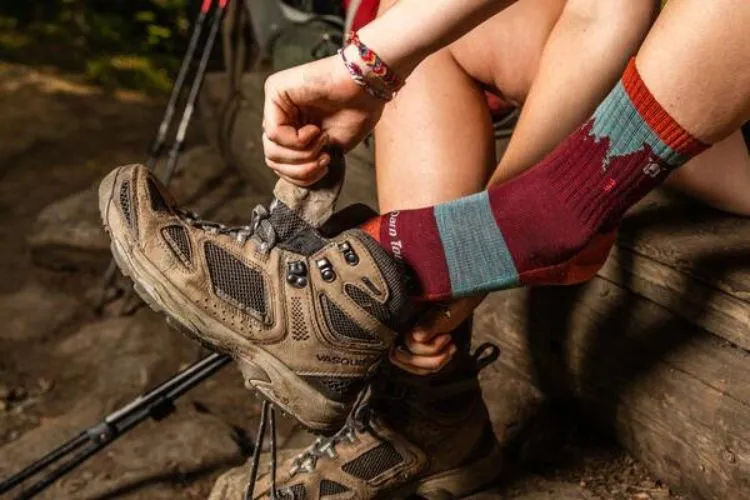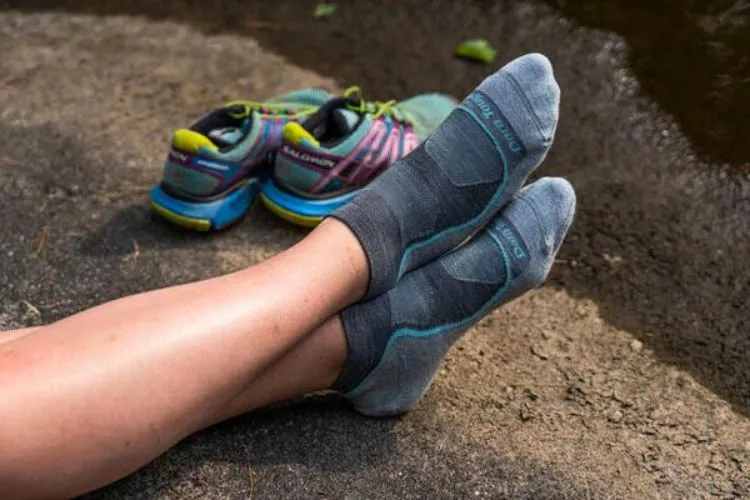Hiking is an activity that combines the joy of exploring the great outdoors with the challenge of traversing various terrains. As such, having the right gear is paramount to ensure not only the success of your journey but also your comfort and safety along the way.
Among the essentials — such as a sturdy pair of boots, a reliable backpack, and appropriate clothing — there lies an often overlooked component: the sock liners.
These thin layers worn underneath your primary hiking socks play a pivotal role in your overall foot health and comfort on the trail.
But, do you need sock liners for hiking?
Well, sock liners are designed with a simple yet crucial purpose: to provide an additional layer of protection and comfort between your feet and your hiking socks.

By doing so, they serve several key functions, including moisture management, reduction of friction, and thermal regulation.
But with the array of gear recommendations and personal preferences, one might wonder: Do you really need them for hiking?
Do You Need Sock Liners for Hiking?
No, you do not need sock liners for hiking, but they can be beneficial for several reasons.
Sock liners are thin, lightweight socks worn underneath regular hiking socks. They are designed to wick moisture away from the foot, reducing the risk of blisters by keeping the feet drier and minimizing friction between the foot and the sock.
For hikers prone to blisters or those embarking on long-distance treks, sock liners can provide an extra layer of protection and comfort. However, whether or not to use them depends on personal preference, the fit of your boots, and the conditions in which you’ll be hiking.
Some hikers find that a good pair of moisture-wicking, well-fitted hiking socks is sufficient without the need for liners. If you’re considering sock liners, it’s a good idea to test them on shorter hikes first to see if they improve your comfort and reduce blister formation.
Arguments Against Using Sock Liners and Situational Usage
While the benefits of sock liners in hiking are well-documented, they are not without their detractors. Some hikers find that sock liners are not a necessary part of their gear list for various reasons.
Understanding these arguments and the situational usage of sock liners can help hikers make an informed decision about incorporating them into their hiking attire.

Potential Issues with Sock Liners
- Overheating: For some hikers, especially in warmer climates, adding an extra layer inside the boot can lead to overheating. This can increase foot perspiration, leading to discomfort and, ironically, the very moisture issues sock liners are meant to mitigate.
- Unnecessary Bulk: Hikers with particularly tight-fitting boots might find that sock liners add unwanted bulk. This can restrict movement and circulation, leading to numbness or even exacerbating the risk of blisters due to tighter pressure points.
- Compatibility Issues: Not all hiking boots are designed with the additional room required for sock liners. In such cases, hikers might experience a decrease in the overall comfort and fit of their boots, affecting their hiking performance and enjoyment.
Situational Usage
- Short vs. Long Hikes: For short, casual hikes in comfortable conditions, the added protection and moisture-wicking properties of sock liners may not be necessary. However, for long-distance treks, especially those spanning multiple days where foot care is paramount, sock liners can be invaluable.
- Climate Considerations: In hot and dry conditions, the primary concern might be ventilation rather than moisture management. Conversely, in cold and wet climates, sock liners can provide an essential layer of insulation and moisture-wicking.
- Personal Preference and Foot Health: Ultimately, the decision to use sock liners often comes down to personal preference and individual foot health. Hikers with sensitive skin, prone to blisters, or with specific moisture-management needs may find sock liners to be a crucial part of their gear. Conversely, those who have hiked without issues may see no need to change their setup.
In conclusion, while sock liners offer numerous benefits, they are not a one-size-fits-all solution. The decision to use them should be based on a hiker’s personal experience, the specific conditions of the hike, and the individual’s unique foot care needs.
As with most hiking gear, what works best is often discovered through trial and experimentation in different environments and situations.
Conclusion:
The debate over the necessity of sock liners for hiking encapsulates a broader truth about outdoor gear: the importance of tailoring your equipment to your personal needs and the specific conditions you anticipate facing.
Sock liners, with their ability to manage moisture, reduce friction, and provide thermal regulation, offer a compelling array of benefits that can enhance the comfort and health of a hiker’s feet over long distances and varied terrains.
However, as we have explored, the decision to incorporate sock liners into one’s hiking gear is not a universal mandate. It is a choice that should be informed by individual experience, the nature of the hike, climate considerations, and personal comfort preferences.
For some, the addition of sock liners will be a game-changer, significantly improving their hiking experience. For others, they may prove unnecessary or even counterproductive, depending on the fit of their boots and the conditions under which they hike.
Ultimately, the question of whether you need sock liners for hiking invites a broader reflection on the philosophy of hiking gear: the best equipment is the one that suits your needs, enhances your comfort, and supports your journey without causing additional complications.
Experimentation, personal experience, and a willingness to adjust your gear as you learn what works best for you are key to finding your ideal hiking setup. Whether sock liners find a place in your boots or not, the pursuit of that perfect balance is a step towards more enjoyable and rewarding adventures on the trail.


